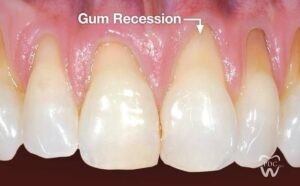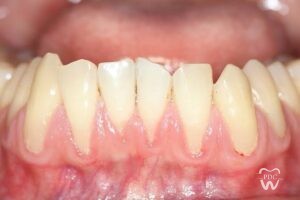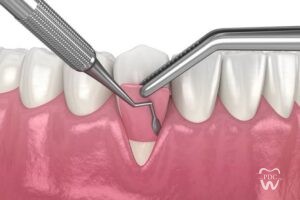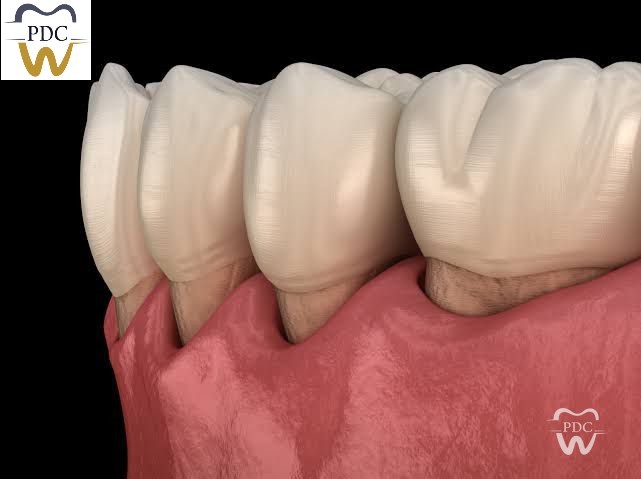Gingival recession occurs when the gums moves away from the teeth, impacting oral well-being. It can happen in both upper and lower jaws, increasing the risk of tooth decay, sensitivity while eating, brushing, and consuming liquids. Because of these problems it is essential to manage gum recession effectively.

The causes, consequences, and solutions outlined below–
Causes:
◦ Mostly due to gum disease. Gingivitis and periodontitis leading to inflammation in the gums and leads to loss of the attachment between your teeth and your gum tissue.
◦ Aggressive Tooth Brushing
◦ Trauma or injury to gum tissues.
◦ Abnormal tooth positioning
◦ Smoking, or tobacco chewing
◦ Diabetes
◦ Lip and tongue piercings
If you want more information to treat gum recession, Call us now and take appointment.
Symptoms of Gum recession:
◦ Glossy deep red or purple coloured gums
◦ Gums bleeds easily
◦ Sensitivity to cold and hot
◦ Feeling pain while chewing
◦ Teeth appears longer
◦ Root decay due to caries
◦ Gaps between teeth overtime
◦ Loosening and shaking of teeth
◦ Tooth loss ( even in healthy teeth)
Ways to Prevent:
To prevent gum recession, it’s important to maintain a well-balanced oral hygiene routine ( brush twice daily with fluoride toothpaste) and regular professional cleanings to remove plaque and tartar build up ( atleast twice yearly).
Treatment for gums recession:

How to reduce sensitivity caused by gum recession?
Most of the patients experience pain or sensitivity due to gum recession because the exposed tooth surface is not covered by enamel.
Dentists can effectively reduce sensitivity by applying fluoride varnish or other desensitizing agents.
Dentists may apply topical anaesthetic gels to reduce hypersensitivity during dental cleaning procedure for your comfort.
Long term and permanent treatment for gum recession:
Gum graft surgery is performed by periodontist ( gum specialist). There are several techniques for gum grafting procedure. The surgeon will determine which surgical technique is right for the clinical situation. During this surgery, a gum graft is used to replace the missing gum and is stabilized using stiches. Usually the gum graft is taken from the palate and a protective covering is given for the tissue to heal.

How long does it take to recover?
Usually one or two weeks would be required for the tissue to return to normal. Surgeons will give postoperative instructions and medications to ensure comfortable and successful recovery.
Call us now and get your gum recession treated. You can access our contact information from contact us section.


